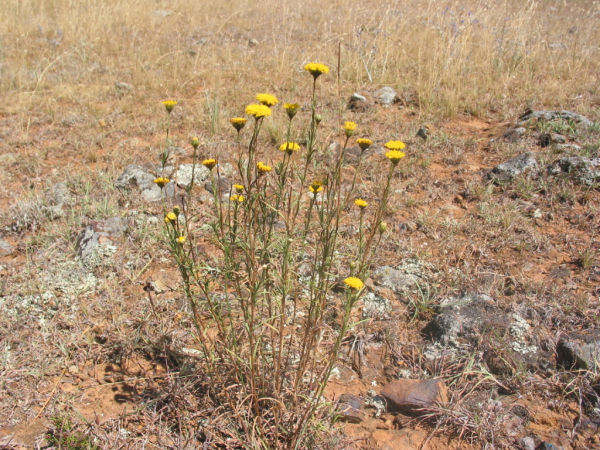Sustainability
- Home
- Locations
- What you can do
- LiFE Framework
- Sustainable Development Goals
- About us
- Grants
- Events
- Contact us
Now searching for:
The Button Wrinklewort Rutidosis leptorrhynchoides, is a native flora species in the Asteraceae family.
 They are found in the St Mark’s remnant grassland bordering the Australian Centre for Christianity and Culture and the St Mark’s National Theological Centre which forms the Charles Sturt University campus at Barton, Canberra. It is a slender perennial wildflower that grows to about 30 cm in height, branching mainly at the base. The leaves are narrow, dark green ageing to yellow-green and up to 2.5 cm long, with rolled edges concealing the undersides. The stems usually die back in late summer or autumn and the new basal leaves appear by early winter. The species has yellow button flowers (2 cm wide) from October to April.
They are found in the St Mark’s remnant grassland bordering the Australian Centre for Christianity and Culture and the St Mark’s National Theological Centre which forms the Charles Sturt University campus at Barton, Canberra. It is a slender perennial wildflower that grows to about 30 cm in height, branching mainly at the base. The leaves are narrow, dark green ageing to yellow-green and up to 2.5 cm long, with rolled edges concealing the undersides. The stems usually die back in late summer or autumn and the new basal leaves appear by early winter. The species has yellow button flowers (2 cm wide) from October to April.
Conservation status: Endangered under the Commonwealth Environment Protection and Biodiversity Conservation Act 1999, the NSW Threatened Species Conservation Act 1995, the ACT Nature Conservation Act 1980 and as Threatened under the Victorian Flora and Fauna Guarantee Act 1988.
The grassland is dominated by Kangaroo Grass (Themeda triandra) and a high diversity of native wildflowers, several of which are regionally uncommon, including orchids and a number of lilies. A population of the Button Wrinklewort occurs within the grassland. They have been found in less than 30 sites so enhancing genetic diversity is very important for the recovery of this species.
The Button Wrinklewort is at risk of extinction throughout its range and threats include: